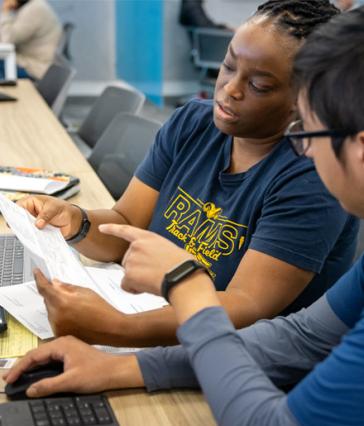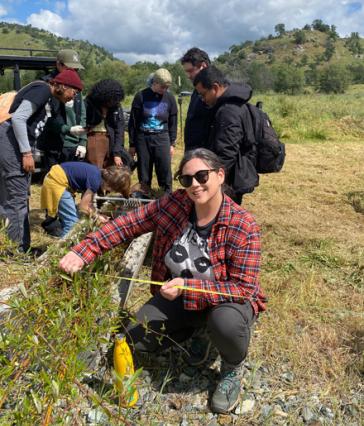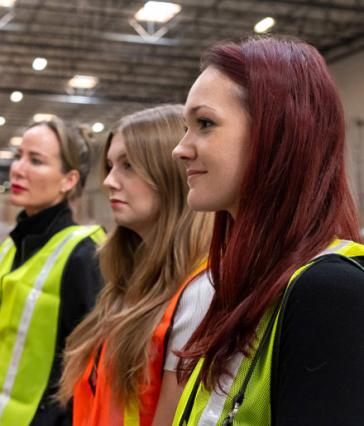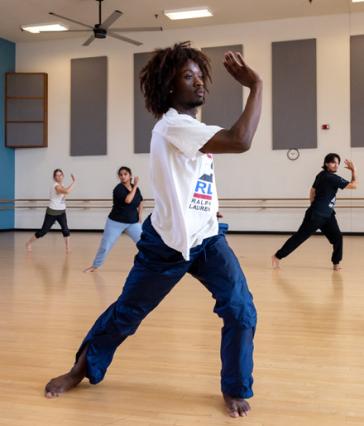From whale bones to rocket science, 3D printing transforms student research

On a bright spring morning at Cal State Long Beach, a group of marine biology majors gathered around four long tables, their focus intent on 157 carefully crafted humpback whale bones — not real, but the most lifelike they’ve ever seen.
Each bone had been 3D-printed using plastic filament at 25% scale, part of a two-year project envisioned by Professor Ted Stankowich, who wanted to give his students a hands-on anatomy lesson as well as the chance to leave a lasting mark in his Mammal Lab, and, more broadly, at The Beach.
All in their fourth year, the students chatted and laughed as they applied spackle and paint, trying to picture how the skeleton would look once fully assembled. At one point, two students stepped outside to work on the two largest bones, the mandibles. These required special attention.
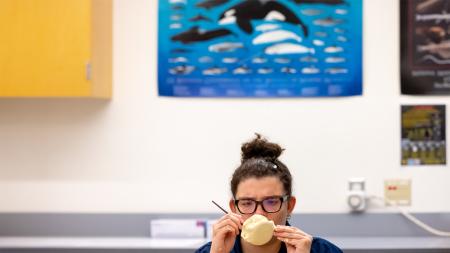

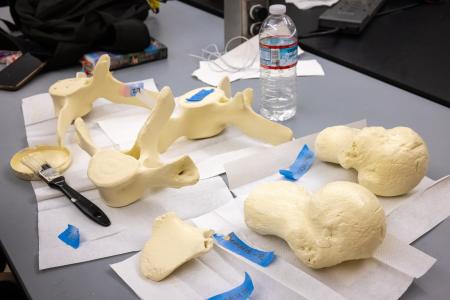
“Can I ask you a really quick question?” one of the students asked Jim Dines, Stankowich's collaborator and the marine mammalogy lecturer overseeing this part of the work. She pointed to a series of small openings in the lower jawbone.
“Foramina, foramina, foramina," she said, referring to the tiny holes that allow nerves and blood vessels to weave through a bone’s architecture. “Is this also foramina?”
Dines leaned in. “No,” he said, “that’s just an artifact of probably the printing. But those — those are natural foramina.”
The project came to an official end in August when staff members assembled the 13-foot model and suspended it from the ceiling of the Mammal Lab.
"After nearly two years of meticulous preparation, printing and assembly," Stankowich said, "seeing the final result is truly gratifying. The collaboration has not only brought this magnificent creature to life, but also has fostered a sense of community and achievement."
Stankowich said he and his students have 3D printed everything from scaled-up rodents and bats to scaled-down sabre tooth tigers over the years. But none has been as complicated as the humpback whale.
Indeed, the whale is easily the Hall of Science’s most impressive 3D accomplishment to date. Yet, in the university’s thriving ecosystem of 3D innovation, the ocean giant is just the tip of the iceberg.
Since its emergence in the 1980s, 3D printing has been used to create everything from custom jewelry and architectural models to medical prosthetics and renewable energy components. Some of the newer models have begun printing food — including alternatives to meat — while others are capable of printing skin, cartilage, blood vessels and even organs for transplants. The latter, which uses human cells, is called bioprinting and holds extraordinary promise for the future of medicine.
At CSULB, which in 2022 was designated a doctoral university with high research activity, 3D printing has exploded in popularity, with the College of Engineering (COE) boasting the most advanced printers. In fact, the COE just this month received a grant for an advanced 3D printer that uses metal-particle ink to create precise electronic circuits, ensuring consistent and high-quality interior components, and the college has raised $9 million toward a new technology wing slated for construction beginning in 2025.

"This kind of model is intended to help communicate with patients and reduce their fear toward upcoming surgery."
— Assistant Professor Kelly Suh, whose students use 3D models to print items for biomedical use
Assistant Professor Ga-Young (Kelly) Suh and her students in the Department of Biomedical Engineering, for example, print blood vessels derived from patients' actual CT scans. The students then study how surgical devices — such as thigh stents, also printed in 3D — interact inside the vessels. The research gained traction last year when Suh, who is leading an intercollegiate team that includes MIT and Stanford, was awarded a $750,000 grant from the American Heart Association.
Suh’s classes also explore how 3D printing can produce customizable components that can provide practical aid to people with disabilities and also, in some cases, reduce patient anxiety. By producing colorized replicas of a person's hearing organs, for example, doctors can ease patient stress by offering a visual aid that clearly demonstrates what hearing implant surgery entails.
“Hearing implant surgery is very delicate and complex,” said Suh, founder of CSULB's CardioVascular Research Club. “This kind of model is intended to help communicate with patients and reduce their fear of the upcoming surgery.”
Meanwhile, in COE’s Department of Mechanical and Aerospace Engineering, 3D printing is nothing short of essential. The department boasts a fleet of printers that churn out everything from rocket components to prototypes for clean energy solutions.
Associate Professor Mahdi Yoozbashizadeh, who established the Beach Rocket Lab in 2017, prints mainly in plastics and metals. His students often use the printers to fast-track the fabrication of proofs of concept, but they also print other rocket parts — such as nose cones — not as replicas, but as actual, functional parts that can be sent into space.
“Hopefully by next year we’ll have our first 3D-printed rocket engine housed at Cal State Long Beach,” Yoozbashizadeh said. “That’s what we’re working on right now.”

"Our goal is to develop next-generation, high-performance and safe hybrid rocket engines that can further open the gates of space exploration to humanity."
— Assistant Professor Mortaza Saeidi, who uses 3D printers to create more eco-friendly, paraffin-based rocket fuel
Also involved in the Space Beach Initiative is Assistant Professor Mortaza Saeidi, who relies on 3D printing to help his students develop everything from wearable health devices to hybrid rocket fuels that could revolutionize space travel. Traditional rocket engines rely on fuels that are dangerous and harm the environment, but Saeidi and his students are leveraging 3D printing to create a new type of paraffin-based hybrid fuel that burns faster and is much cleaner.
“We print various materials, from polymers to metallic nanoparticles, for various applications,” said Saeidi, who joined the faculty in 2022. “Our goal is to develop next-generation, high-performance and safe hybrid rocket engines that can further open the gates of space exploration to humanity.”
But rest assured, it’s not all rocket science.
On the ground floor of the University Library, the Gerald M. Kline Innovation Space (ISPACE) hums with the activity of students who’ve embraced 3D printing for an array of projects.

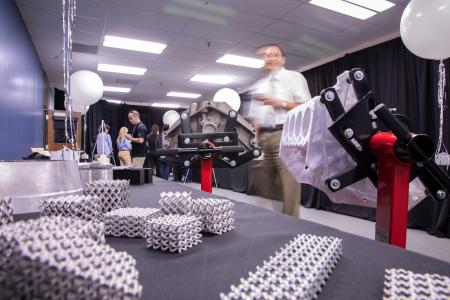
Colleges and departments all over campus make use of the printers, said ISPACE technician Cesar Sigala. Like the Mammal Lab, the Anthropology Department scans and prints model skulls; the Art Department prints molds for sculptures and sometimes even the sculptures themselves; and the Industrial Design Department prints lots and lots of prototypes.
“Every year,” Sigala said, "we print phone cases, bike phone holders, phone stands and bookmarks as part of the industrial design students’ classwork.”
Notably, during the COVID-19 pandemic, a small team of students, faculty and recent alumni used ISPACE printers to produce some 3,600 face shields for front-line workers at dozens of institutions.
Then, of course, there’s the strictly fun stuff.
“We’ve printed gaming accessories, such as game components and dice towers, as students’ personal projects," he said. “We’ve even printed cosplay items.”
The ISPACE lab is open to all students, Sigala said, and the items that can be printed are as varied as students’ imaginations. Those interested in experimenting themselves need only fill out a request form and upload their 3D files to get started.








